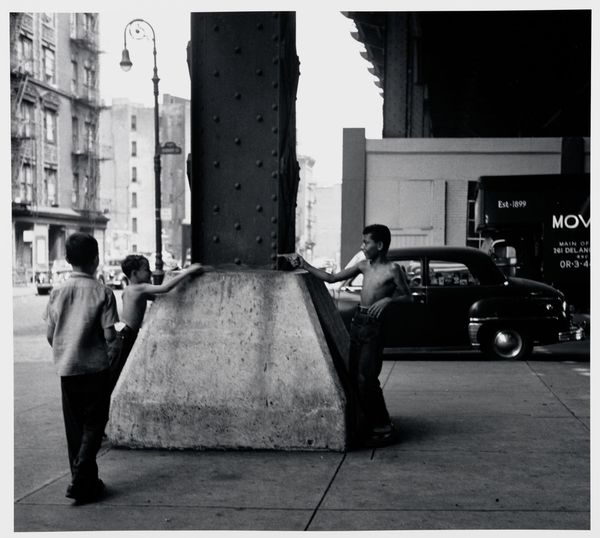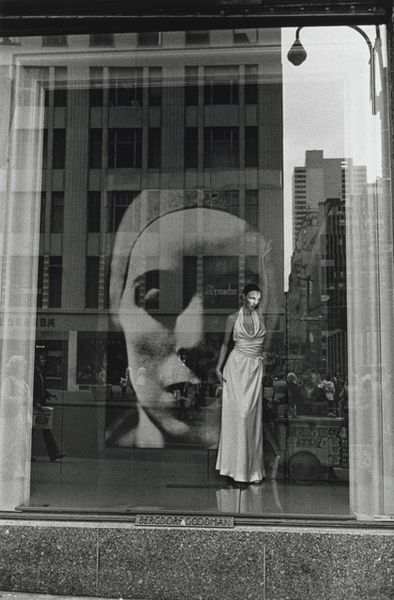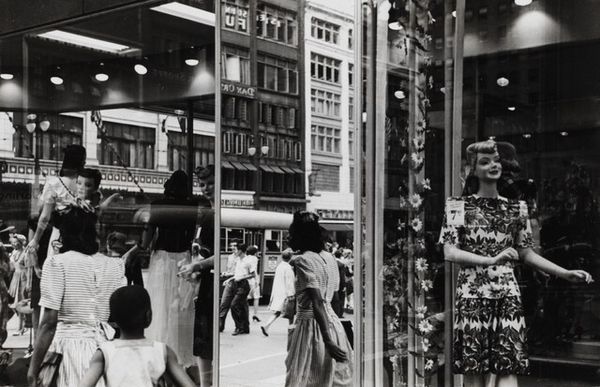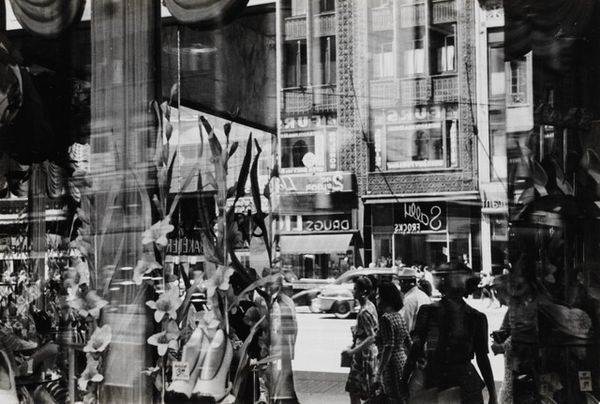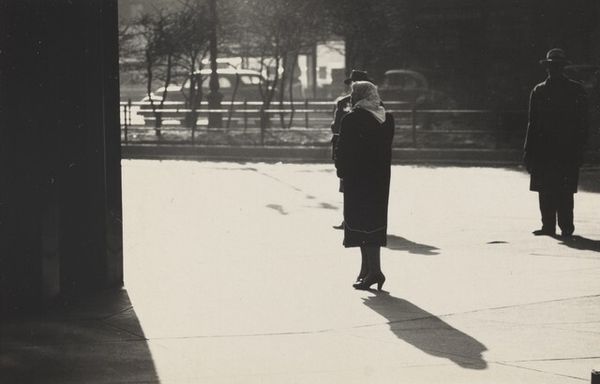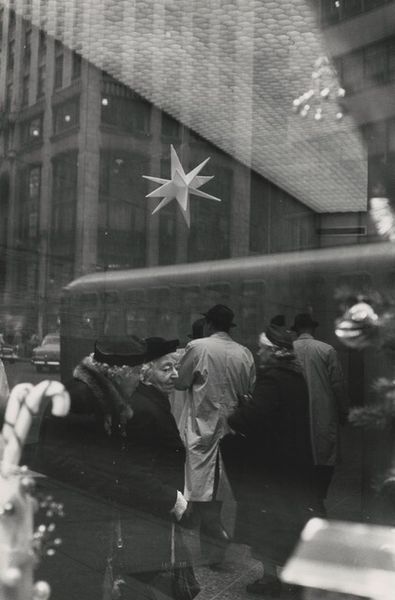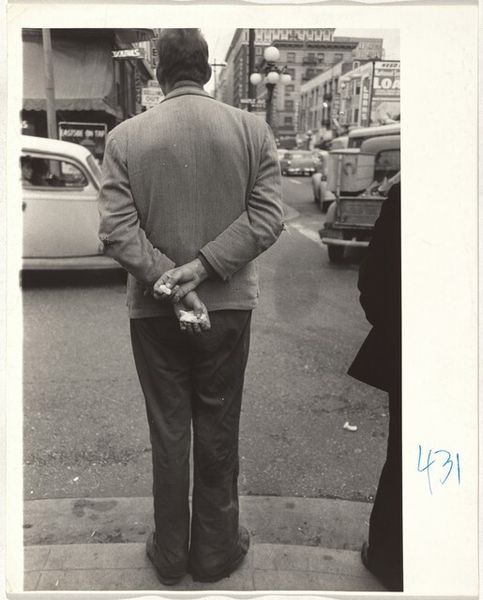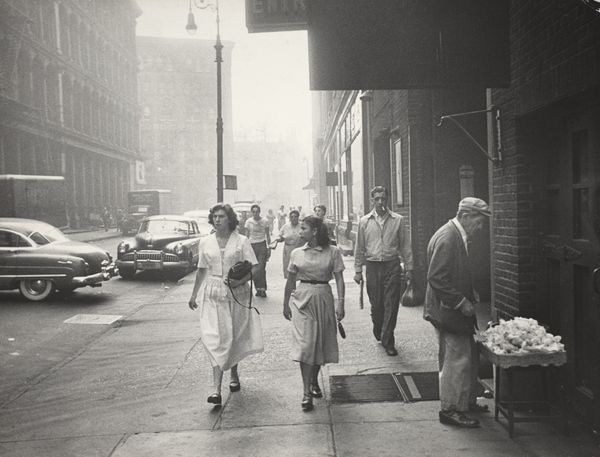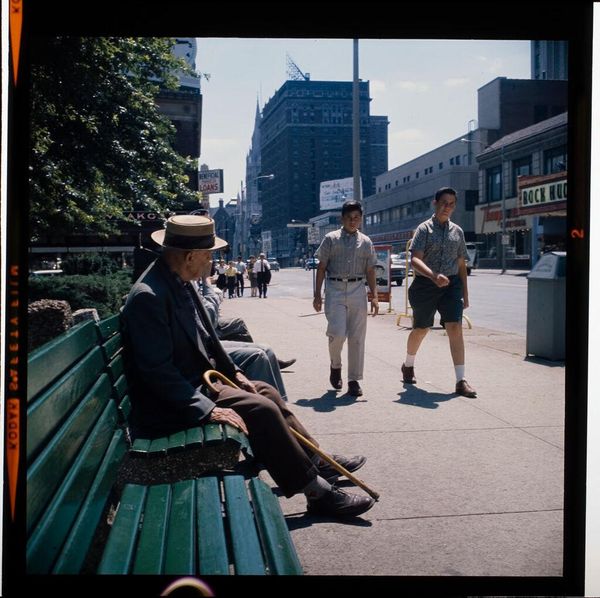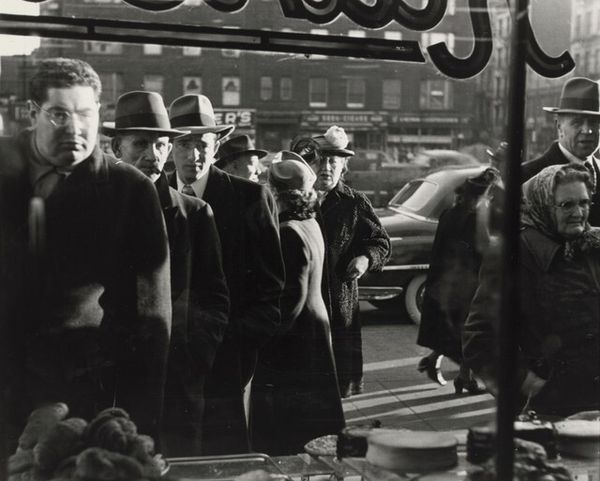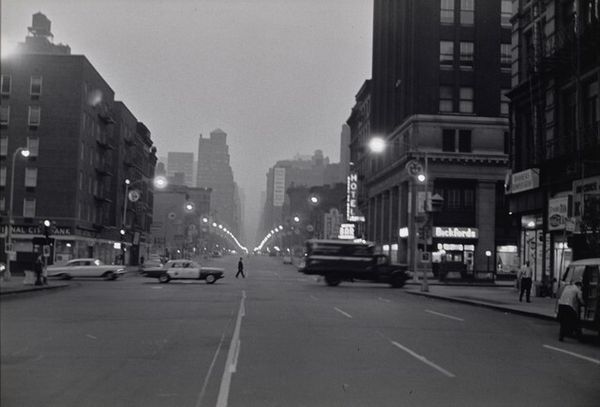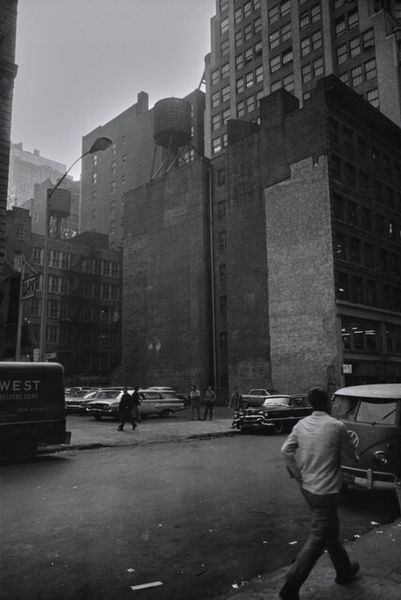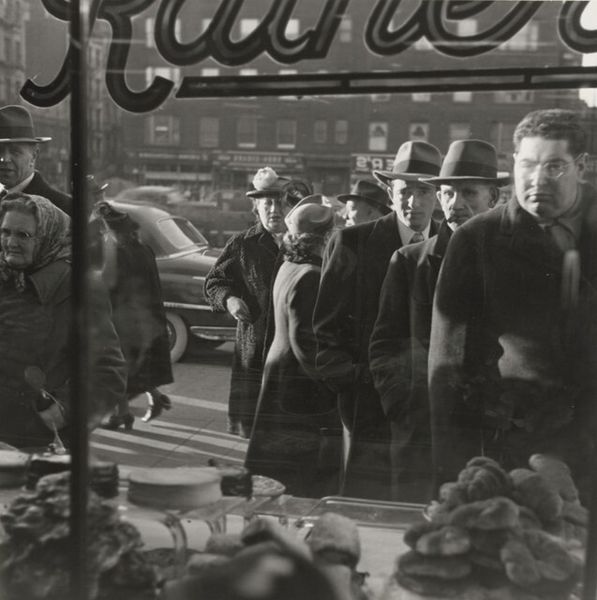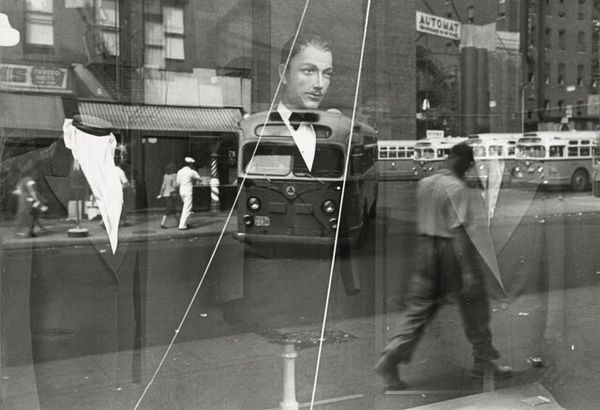
photography
#
black and white photography
#
street-photography
#
photography
#
black and white
#
monochrome photography
#
street photography
#
cityscape
#
monochrome
#
realism
Dimensions: image: 19.05 × 29.21 cm (7 1/2 × 11 1/2 in.) sheet: 27.94 × 35.56 cm (11 × 14 in.)
Copyright: National Gallery of Art: CC0 1.0
Editor: Richard Gordon's "Market Street, San Francisco," taken between 1973 and 1978, is a fascinating capture of urban life in black and white photography. I’m immediately drawn to how the different textures and forms—buildings, vehicles, and people—intersect. How do you interpret this work? Curator: Looking at this photograph through a materialist lens, it’s intriguing to consider the labor and social structures that went into its making and circulation. Think about the silver halide crystals on the film, the industrial processes to create both the camera and the photographic paper. What kind of economic landscape is captured? Editor: Well, I see a very busy city street, lots of different kinds of buildings and businesses... the older cars and the clothing styles. It seems to point to the contrast between a rapidly changing skyline and enduring social habits. Curator: Precisely. And what about the subjects themselves? Their attire, their roles in this urban theater? Who is included in this view, and who is excluded? Also, it is not clear from the image itself when it was created - and why choose monochrome? How do these specific photographic choices affect the narrative presented? Editor: I suppose the sharp contrast draws attention to economic divisions, highlighting both the wealthy in the stores and possibly lower income people on the streets trying to earn a living. Choosing black and white helps capture that division, by drawing attention away from glamour. Curator: Exactly. Considering how it was made invites us to analyze the entire economic and social apparatus represented within the image itself, don't you agree? Editor: That makes so much sense! Considering the photographic production along with subject really deepens our understanding of the photo and its social impact. Curator: Indeed. Material analysis brings to light the hidden socioeconomic layers that shape our perception of reality. It moves the focus to what is really depicted in an artpiece, the everyday material conditions.
Comments
No comments
Be the first to comment and join the conversation on the ultimate creative platform.
